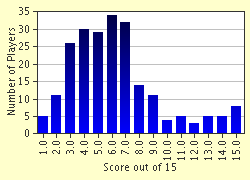Quiz Answer Key and Fun Facts
1. Where were the first 'acts of war' committed by Australian troops in WWI?
2. Who wrote 'For the Fallen', that is recited every Anzac Day in Australia as part of the commemoration service?
3. What do the initials ANZAC stand for?
4. In what year was Anzac Day officially named in Australia?
5. What was the alternative name mooted for the forces who became known as the Anzacs?
6. How many New Zealand casualties were there at Anzac Cove?
7. How many New Zealand soldiers actually died at Anzac Cove on 25 April, 1915 (Anzac Day)?
8. Who was Australia's Prime Minister when WWI began?
9. Who is one of the best remembered of the original 'Anzacs'?
10. Who was appointed Commander of the Australian Imperial Force's (AIF's) Fourth Brigade, based in Egypt?
11. Which country requested help, leading to the attack on Turkey by the allies during WWI?
12. Which Australian newspaper reported the first news in Australia of the Australian landing at Gallipoli?
13. What name did Charles Bean use to describe the New Zealand forces at Gallipoli?
14. Who is Australia's youngest winner of the Victoria Cross Medal?
15. How many Victoria Crosses were awarded to members of the Australian forces who were involved in the Battle of Lone Pine in 1915?
Source: Author
Engadine
This quiz was reviewed by FunTrivia editor
bloomsby before going online.
Any errors found in FunTrivia content are routinely corrected through our feedback system.

